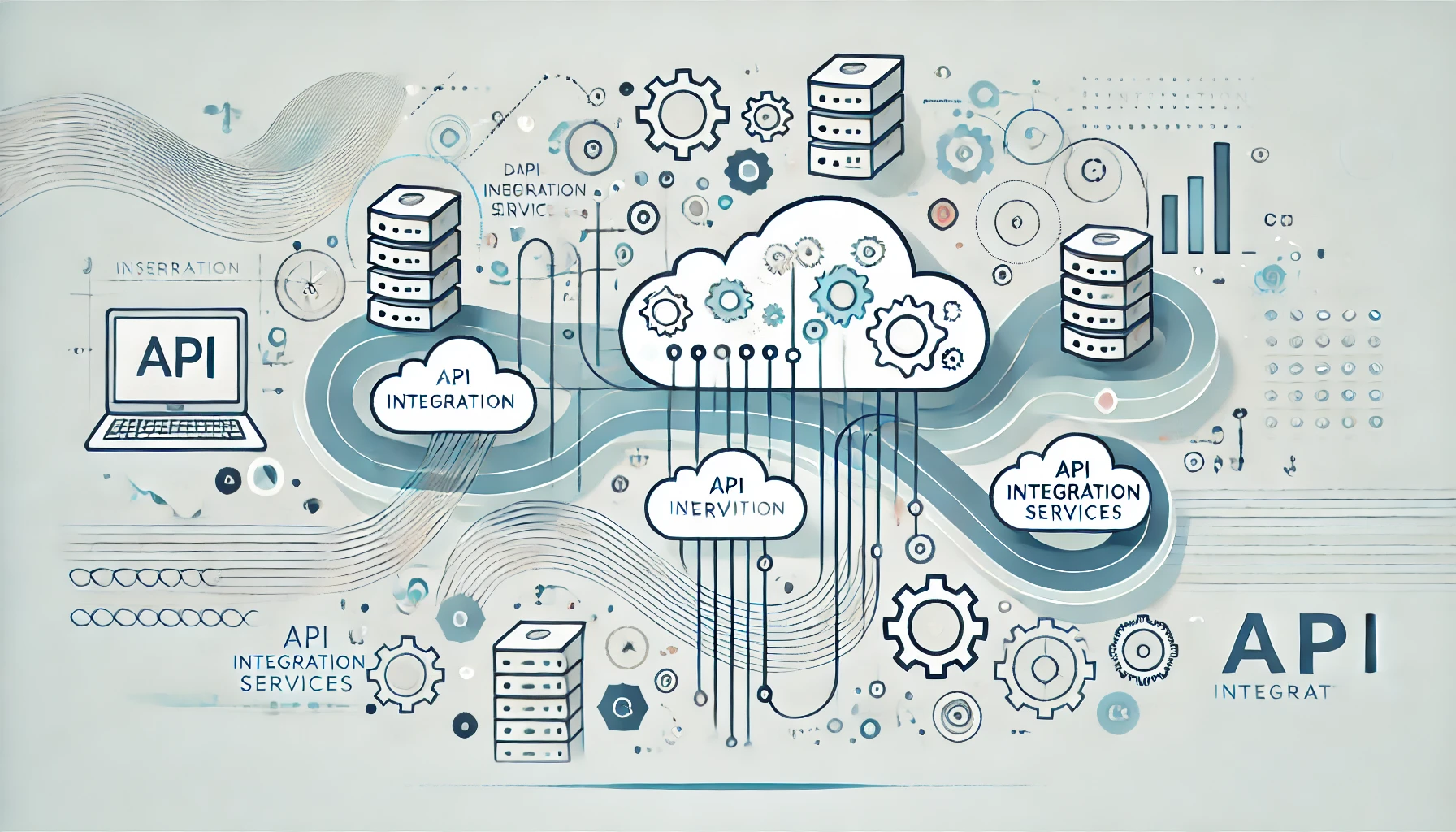To ensure seamless integration of APIs, understanding the seven essential components of API integration services is key. From API Gateways to Error Handling mechanisms, each element plays a crucial role in optimizing performance. By mastering these components, you can elevate your API integration game and unlock a world of possibilities.
API Gateway
When setting up your API integration services, one essential component to consider is the API Gateway. The API Gateway acts as a central point for managing, securing, and optimizing the flow of traffic between your APIs and clients. In terms of security measures, the API Gateway plays a crucial role in enforcing authentication, authorization, and encryption protocols to protect your API endpoints from unauthorized access and potential security threats. By implementing security policies at the gateway level, you can ensure that only authenticated and authorized users can interact with your APIs, enhancing overall system security.
Moreover, the API Gateway contributes to performance optimization by offloading tasks such as request routing, rate limiting, caching, and response compression. These optimizations help streamline the communication process between clients and APIs, reducing latency, improving scalability, and enhancing overall system efficiency. By leveraging the capabilities of the API Gateway, you can not only enhance the security of your API integration services but also optimize their performance for a seamless user experience.
Data Mapping
When integrating APIs, data mapping plays a crucial role in ensuring compatibility between systems. This process involves transforming data structures to match the required format of the receiving system. By meticulously mapping data fields, you can guarantee the accuracy and integrity of information exchanged between applications.
Mapping for Compatibility
To ensure seamless communication and efficient data exchange between different systems, the process of mapping for compatibility, also known as data mapping, plays a crucial role in API integration services. Compatibility testing and integration testing are vital steps in this process to ensure that data can flow accurately between systems. Schema mapping involves aligning the structure of data fields between different systems, while format conversion focuses on transforming data from one format to another, such as from XML to JSON or vice versa. Through meticulous schema mapping and format conversion, API integration services can bridge the gap between disparate systems, enabling them to communicate effectively. This mapping process lays the foundation for successful integration by ensuring that data is accurately interpreted and processed by each system involved. By paying attention to these compatibility aspects, API integration services can operate smoothly and effectively, facilitating seamless data exchange between systems.
Transforming Data Structures
In transforming data structures, also known as data mapping, the key objective is to align the format and structure of data fields between disparate systems. Data transformation involves converting data from one format to another to enable seamless communication and integration between different applications. Integration challenges often arise during this process due to variations in data formats, naming conventions, and data types used in different systems. To overcome these challenges, a detailed mapping strategy is essential to ensure that data is accurately translated and transferred between systems without loss or distortion. By defining clear mappings for each data field, you can streamline the integration process and ensure that data is correctly interpreted and utilized by both systems. Through effective data mapping, you can harmonize the data structures of diverse systems, enabling smooth data exchange and enhancing the overall efficiency and reliability of API integration services.
Ensuring Data Accuracy
To ensure data accuracy within the context of data mapping, precision is paramount. When integrating APIs, validating data ensures that information is correct and consistent across systems. Here are some key considerations to maintain data accuracy:
- Data validation: Implement validation checks to ensure data integrity and accuracy throughout the integration process.
- Data security: Prioritize secure data transmission to protect sensitive information from unauthorized access or breaches.
- Mapping precision: Accurately map data fields between different systems to prevent errors and discrepancies.
- Error handling: Develop a robust error-handling mechanism to address data inconsistencies promptly.
- Testing procedures: Conduct thorough testing to validate data mappings and ensure accuracy before deployment.
Validation
When it comes to API integration services, validation plays a crucial role in ensuring data integrity and accuracy. Data integrity checks are essential to verify the quality and consistency of information exchanged between systems. Implementing robust error handling strategies is equally important to detect and address any discrepancies that may arise during the integration process.
Data Integrity Checks
With the increasing volume and complexity of data being exchanged through API integrations, ensuring data integrity is paramount. When it comes to data integrity checks in API integration services, there are several crucial aspects to consider:
- Data Encryption: Implement robust encryption mechanisms to protect data in transit and at rest.
- Security Measures: Utilize authentication and authorization protocols to safeguard data from unauthorized access.
- Performance Optimization: Fine-tune data integrity processes to minimize latency and ensure efficient data verification.
- Scalability Considerations: Design data integrity checks that can scale seamlessly as data volumes increase.
- Error Monitoring: Implement real-time monitoring and alerting systems to promptly detect and address any data integrity issues.
Error Handling Strategies
As you focus on ensuring data integrity through robust encryption and security measures in your API integration services, it’s imperative to also establish effective error handling strategies for validation. Best practices for error handling include implementing thorough input validation to prevent malicious data injections and ensuring proper error codes and messages are returned to users. By validating input data formats, lengths, and ranges, you can reduce the risk of processing incorrect information. Additionally, implementing structured error responses with detailed information can aid in troubleshooting and resolving issues promptly.
Common pitfalls in error handling strategies involve inadequate validation checks, leading to vulnerabilities such as SQL injection and cross-site scripting attacks. Failing to provide informative error messages can also frustrate users and hinder problem resolution. It’s crucial to prioritize comprehensive validation mechanisms and clear error communication to enhance the reliability and usability of your API integration services. By adhering to these best practices and avoiding common pitfalls, you can strengthen the overall quality and security of your API integration solutions.
Transformation
Regularly, businesses undergo a process of transformation to enhance their operations and stay competitive in the market. When it comes to API integration services, transformation plays a crucial role in ensuring seamless data flow and interoperability between systems. Data transformation is a key aspect of integration strategies that enable businesses to convert data from one format to another to meet the specific requirements of different applications. Here are some essential aspects to consider regarding transformation:
- Data Mapping: Creating a mapping between source and target data fields.
- Format Conversion: Converting data formats such as XML to JSON or CSV to XML.
- Field Normalization: Ensuring consistency in data fields across different systems.
- Data Enrichment: Enhancing data with additional information from external sources.
- Error Handling: Implementing mechanisms to manage errors during the transformation process.
Effective transformation mechanisms are vital for successful API integration, enabling businesses to streamline processes and extract maximum value from their data assets.
Routing
In the realm of API integration services, the next critical component to address is Routing. Routing optimization plays a key role in ensuring that data is efficiently transferred between different systems. By optimizing routing paths, you can enhance the speed and reliability of API interactions, leading to improved overall performance.
When it comes to Routing, security measures are paramount. Implementing robust security protocols such as encryption and authentication helps safeguard sensitive data transmitted through APIs. Secure routing mechanisms prevent unauthorized access and protect against potential threats like data breaches or cyber-attacks.
To ensure effective Routing in API integration services, it is essential to establish clear routing rules and paths. By defining specific routes for different types of data and transactions, you can streamline the flow of information and minimize bottlenecks. Additionally, monitoring and regular audits are crucial to maintaining the integrity and security of routing configurations. By combining routing optimization with stringent security measures, you can create a robust API integration system that operates efficiently and securely.
Monitoring
Monitoring is an essential aspect of API integration services, enabling real-time tracking and analysis of system performance and data exchange. To ensure seamless operation and swift issue resolution, consider the following key points:
- Performance Monitoring: Implement tools to continuously assess API performance metrics.
- Optimization Strategies: Utilize monitoring data to identify bottlenecks and optimize API workflows.
- Real-Time Monitoring: Enable real-time tracking of API interactions to promptly address any anomalies.
- Alert System Notifications: Set up alerts to notify stakeholders of performance deviations or failures instantly.
- Data Analysis: Regularly analyze monitoring data to fine-tune integration processes and enhance overall system efficiency.
Error Handling
To effectively manage errors within API integration services, a robust error handling system is imperative. Handling exceptions in a structured manner is crucial for ensuring smooth operation. Implementing custom error messages tailored to different scenarios enhances clarity and aids in troubleshooting. Automated error detection mechanisms can significantly reduce the time taken to identify and rectify issues. By setting up automated alerts for specific error types, you can proactively address potential problems before they escalate. Debugging errors promptly is essential for maintaining the reliability and performance of your API integrations. Regularly reviewing error logs and analyzing patterns can help in identifying underlying issues and implementing preventive measures. Efficient error handling not only improves the user experience but also boosts the overall effectiveness of your API integration services. By prioritizing error management, you can streamline operations and minimize disruptions.
Frequently Asked Questions
How Can API Integration Services Improve Customer Engagement?
To improve customer engagement, API integration services enhance efficiency and user experience. Imagine APIs as bridges connecting your systems, providing seamless interactions. This integration streamlines processes, ensuring a cohesive and personalized experience for customers.
What Security Measures Are in Place to Protect Data During Integration?
To protect data during integration, robust security measures are implemented. Data encryption ensures information is secure during transmission. Access control restricts unauthorized entry to sensitive data, safeguarding against breaches. These components work together to fortify data integrity.
Can API Integration Services Be Customized to Meet Specific Business Needs?
You can customize API integration services to meet specific business needs. With customization options, you tailor solutions to match your unique requirements. This ensures data protection, compliance measures, and optimal performance aligned with your business objectives.
What Scalability Options Are Available for API Integration Services?
When it comes to API integration services, you can leverage various scalability options to ensure optimal performance. By implementing strategies such as load balancing, caching mechanisms, and horizontal scaling, you can achieve efficient performance optimization for your integrated systems.
How Can API Integration Services Help Streamline Business Processes?
To streamline business processes, API integration services automate tasks, optimize efficiency, synchronize data, and automate workflows. Like cogs in a well-oiled machine, they work together seamlessly, ensuring smooth operations and enhanced productivity.


